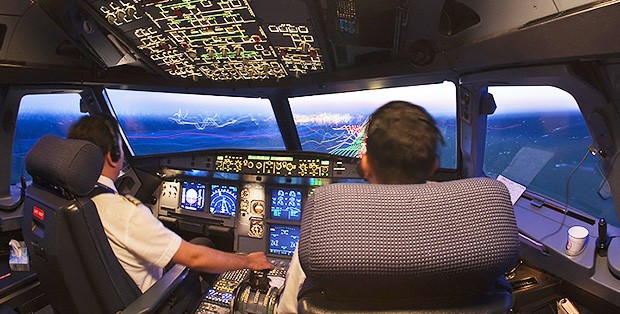News release
A flight management system available to all

Montreal, November 17, 2015 — The aircraft industry is worth billions. But it’s not just jets driving the dollars up — it’s the complicated electronics that help them fly.
Flight management systems (or FMS) were commercially introduced in the Boeing 767 in the early 1980s. They’re now used in all commercial airliners — and in private planes too. That translates to major revenues: the FMS market accounted for $5.98 billion USD in 2014, and it is expected to reach $10.6 billion by 2022.
Manufacturers charge a minimum of $13,000 per FMS, and they’ve long kept their systems secret.
For the airline industry, that’s not a problem. For the owners of small personal aircraft, those prices are prohibitive. But new research from Concordia University in Montreal just might level the playing field.
And it could also change how aerospace students prepare for work in the field.
In many ways, FMS are like the Global Positioning System (GPS) in your car, with waypoints programmed in between the origin and the destination. The pilot enters where the plane is headed, and off you go — no need for an actual person to do the navigating, or figure out how fast to fly in order to save fuel or arrive on time. The FMS does it.
In a forthcoming study to be published by the American Institute of Aeronautics and Astronautics, Concordia researchers Luis Rodrigues and Jesus Villarroel set out a mathematical formula that accurately recreates the calculations an FMS makes for a cruising Airbus 320.
“Our formula can easily be adapted for smaller aircraft — and then run in an app on a smartphone,” says Rodrigues, who is an associate professor in the Department of Electrical and Computer Engineering and a member of the Concordia Institute for Aerospace Design and Innovation (CIADI).
“Essentially, this formula is an open access FMS that can be used by pilots, people in the industry, and people who study aerospace. FMS algorithms have long been proprietary information that was unavailable to the public. Now we have a better understanding of what’s in the code.”
Rodrigues and his co-author Villarroel, who recently completed his Master of Applied Science at Concordia and is now working with the flight simulator company TRU Simulation and Training, are excited about the educational implications of this new FMS formula.
“We can give students the analytic formula and have them adjust it to fit different aircraft models. It gives students an idea of what it’s like to work with and program a commercial FMS — before they’re employed by the airline industry!” says Rodrigues.
Although that app has yet to be developed, Rodrigues is confident that it wouldn’t be hard to program. “Our formula is a square root of a sum of two terms, one of them depending on the weight of the aircraft. The formula can be used with data from a specific aircraft, just like with a regular FMS. Students using our FMS can ask themselves, ‘If I change the weight by a tiny bit, if I change the altitude by this much, what will happen?’ They can then plug those numbers into the formula to find out.”
Will the formula ever be used by big companies like Airbus or Boeing? That remains to be seen. But the study has already piqued the curiosity of navigation systems company Marinvent, who will soon test the formula in one of their simulators — one of which is housed at Concordia.
From there, the sky’s the limit, says Rodrigues. “We’ve opened the door for Marinvent to adapt an FMS for their own needs. I hope others will take this formula and go and build on what we’ve done.”
Partners in research: This research was funded in part by Mitacs and TRU Simulation + Training (formerly Mechtronix).
Find out more about research at the Concordia Institute of Aerospace Design and Innovation (CIADI).
Source
© Concordia University